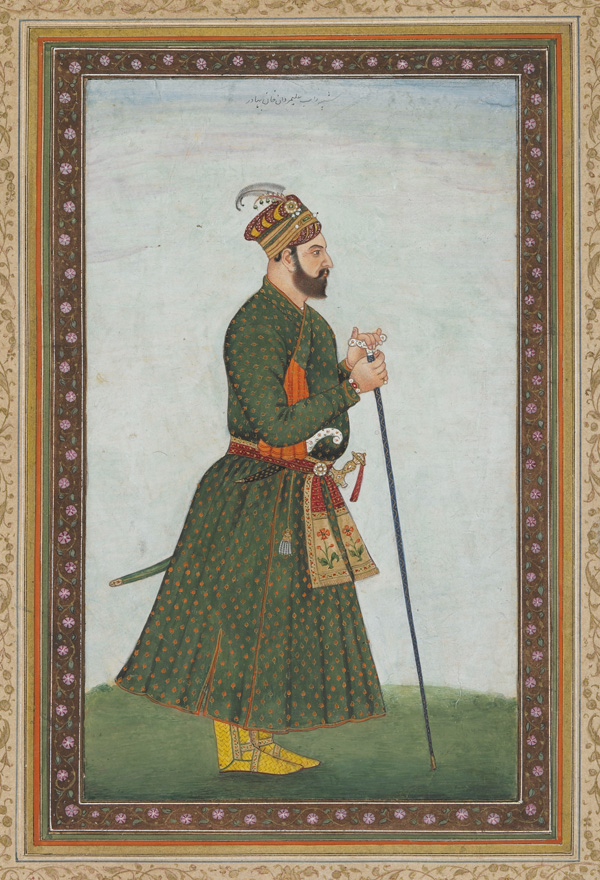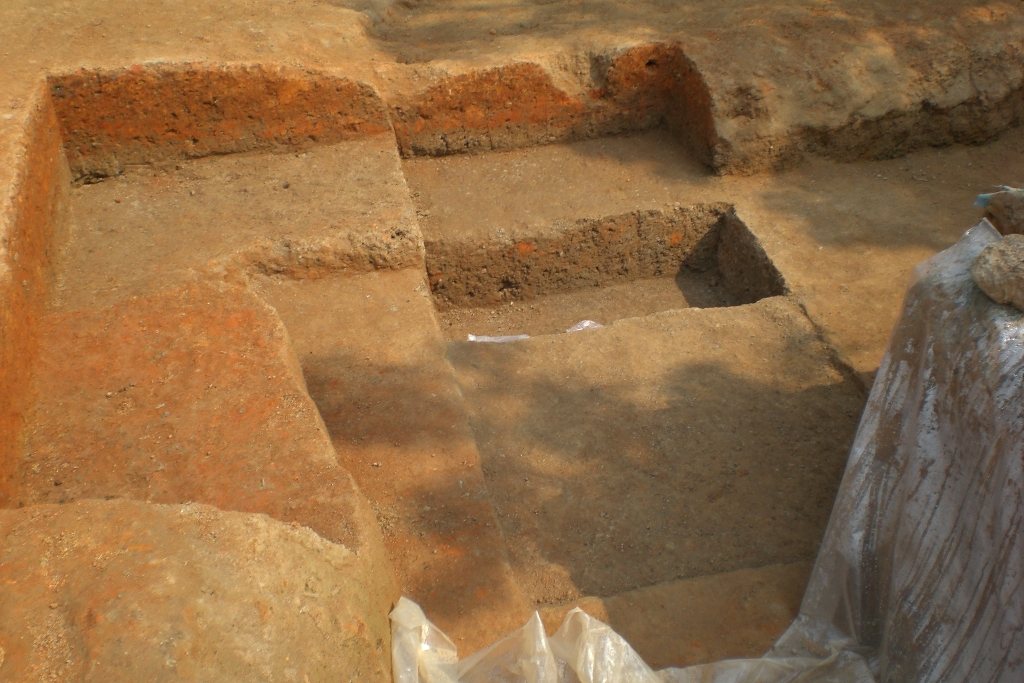|
Ibrahim Khan II
Ibrahim Khan II ( fa, )(''reigned:'' 1689–1697; died 1701) was the last Subahdar of Bengal during the reign of emperor Aurangzeb. His only child was a son Named Wazir Ibrahim Khan (1654–1713) and was diwan of Emperor Jahandar Shah. He was killed at the orders of Farrukhsiyar. Early life He was the eldest son of Ali Mardan Khan. Ali Mardan was a noble of Persian origin. Prior to the governorship of Bengal, Ibrahim Khan served as Subahdar of Kashmir, Lahore and Bihar. He had a son named Zabardast Khan. Reign During his reign, English and French traders were granted several ''farmans'' to continue trading in Bengal. During 1695–1696, he failed to suppress the revolt of the Chandrakona zamindar, Shobha Singh. Later in 1697, Ibrahim Khan was replaced by emperor Aurangzeb's own grandson, Prince Azim-us-Shan. See also *List of rulers of Bengal *History of Bengal *History of Bangladesh Civilisational history of Bangladesh previously known as East Bengal, dates bac ... [...More Info...] [...Related Items...] OR: [Wikipedia] [Google] [Baidu] |
Ali Mardan Khan
Ali Mardan Khan ( fa, ; died April 1657) was a Kurdish military leader and administrator, serving under the Safavid kings Shah Abbas I and Shah Safi, and later the Mughal ruler Shah Jahan. He was the son of Ganj Ali Khan. After surrendering the city of Qandahar, part of the easternmost territories of the Safavids to the Mughals in 1638, he served with distinction in the Mughal administration, earning the highest honors of the Mughal court. Career Ali Mardan Khan was a Kurd of the Zig tribe, and son of Safavid official Ganj Ali Khan. In 1624, Ali Mardan Khan inherited his father's position when he was appointed governor of Kerman, Sistan, and Qandahar by the Safavid emperor Shah Abbas. Like his father, Ali Mardan Khan governed from the city of Qandahar. In 1625, control of Kerman was handed over to Tahmasp Qoli Khan for administrative reasons. In 1632, Ali Mardan Khan began a series of correspondences with the Mughal court, culminating in the official surrender of his territ ... [...More Info...] [...Related Items...] OR: [Wikipedia] [Google] [Baidu] |
French People
The French people (french: Français) are an ethnic group and nation primarily located in Western Europe that share a common French culture, history, and language, identified with the country of France. The French people, especially the native speakers of langues d'oïl from northern and central France, are primarily the descendants of Gauls (including the Belgae) and Romans (or Gallo-Romans, western European Celtic and Italic peoples), as well as Germanic peoples such as the Franks, the Visigoths, the Suebi and the Burgundians who settled in Gaul from east of the Rhine after the fall of the Roman Empire, as well as various later waves of lower-level irregular migration that have continued to the present day. The Norse also settled in Normandy in the 10th century and contributed significantly to the ancestry of the Normans. Furthermore, regional ethnic minorities also exist within France that have distinct lineages, languages and cultures such as Bretons in Brittany, Occi ... [...More Info...] [...Related Items...] OR: [Wikipedia] [Google] [Baidu] |
Mughal Nobility
Mughal or Moghul may refer to: Related to the Mughal Empire * Mughal Empire of South Asia between the 16th and 19th centuries * Mughal dynasty * Mughal emperors * Mughal people, a social group of Central and South Asia * Mughal architecture * Mughlai cuisine * Mughal painting Other uses * Moghulistan in Central Asia ** Moghol people * Moghul, Iran, a village * Mirza Mughal (1817–1857), a Mughal prince * Fiyaz Mughal, founder of Tell MAMA Tell MAMA (Measuring Anti-Muslim Attacks) is a national project which records and measures anti-Muslim incidents in the United Kingdom. It is modelled on the Jewish Community Security Trust (CST) and like the CST it also provides support for vi ... See also * Mogul (other) * Mughal-e-Azam (other) {{disambiguation ... [...More Info...] [...Related Items...] OR: [Wikipedia] [Google] [Baidu] |
Khan Jahan Bahadur
Khan may refer to: * Khan (inn), from Persian, a caravanserai or resting-place for a travelling caravan * Khan (surname), including a list of people with the name *Khan (title), a royal title for a ruler in Mongol and Turkic languages and used by various ethnicities **Khagan, an imperial title used by monarchs of various regimes Art and entertainment * Khan (band), an English progressive rock band in the 1970s * ''Khan!'' (TV series), a 1975 American police detective television series * ''Khan'' (serial), a 2017 Pakistani television drama serial *Khan Maykr, the main villain of Doom Eternal, the leader of the heavenly Urdak realm * Khan Noonien Singh, a prominent ''Star Trek'' villain in an original series episode and the principal antagonist in ''Star Trek II: The Wrath of Khan'', then later ''Star Trek Into Darkness'' *Citizen Khan, a British sitcom about a British-Indian man, Mr Khan Radio *KHAN (FM), a defunct radio station (99.5 FM) formerly licensed to serve Chugwater, ... [...More Info...] [...Related Items...] OR: [Wikipedia] [Google] [Baidu] |
History Of India
According to consensus in modern genetics, anatomically modern humans first arrived on the Indian subcontinent from Africa between 73,000 and 55,000 years ago. Quote: "Y-Chromosome and Mt-DNA data support the colonization of South Asia by modern humans originating in Africa. ... Coalescence dates for most non-European populations average to between 73–55 ka." However, the earliest known human remains in South Asia date to 30,000 years ago. Settled life, which involves the transition from foraging to farming and pastoralism, began in South Asia around 7000 BCE. At the site of Mehrgarh presence can be documented of the domestication of wheat and barley, rapidly followed by that of goats, sheep, and cattle. By 4500 BCE, settled life had spread more widely, and began to gradually evolve into the Indus Valley civilisation, an early civilisation of the Old World, which was contemporaneous with Ancient Egypt and Mesopotamia. This civilisation flourished between 2500 BCE and 1900 ... [...More Info...] [...Related Items...] OR: [Wikipedia] [Google] [Baidu] |
History Of Bangladesh
Civilisational history of Bangladesh previously known as East Bengal, dates back over four millennia, to the Chalcolithic. The country's early documented history featured successions of Hindu and Buddhist kingdoms and empires, vying for regional dominance. Islam arrived during the 6th-7th century AD and became dominant gradually since the early 13th century with the conquests led by Bakhtiyar Khalji as well as activities of Sunni missionaries such as Shah Jalal in the region. Later, Muslim rulers initiated the preaching of Islam by building mosques. From the 14th century onward, it was ruled by the Bengal Sultanate, founded by king Shamsuddin Ilyas Shah, beginning a period of the country's economic prosperity and military dominance over the regional empires, which was referred by the Europeans as the richest country to trade with. Afterwards, the region came under the Mughal Empire, as its wealthiest province. Bengal Subah generated almost half of the empire's GDP and 12% of ... [...More Info...] [...Related Items...] OR: [Wikipedia] [Google] [Baidu] |
History Of Bengal
The history of Bengal is intertwined with the history of the broader Indian subcontinent and the surrounding regions of South Asia and Southeast Asia. It includes modern-day Bangladesh and the Indian states of West Bengal and Assam's Karimganj district, located in the eastern part of the Indian subcontinent, at the apex of the Bay of Bengal and dominated by the fertile Ganges delta. The region was known to the ancient Greeks and Romans as ''Gangaridai'', a powerful kingdom whose war elephant forces led the withdrawal of Alexander the Great from India. Some historians have identified Gangaridai with other parts of India. The Ganges and the Brahmaputra rivers act as a geographic marker of the region, but also connects the region to the broader Indian subcontinent. Bengal, at times, has played an important role in the history of the Indian subcontinent. The area's early history featured a succession of Indian empires, internal squabbling, and a tussle between Hinduism and Buddhi ... [...More Info...] [...Related Items...] OR: [Wikipedia] [Google] [Baidu] |
List Of Rulers Of Bengal
This is a list of rulers of Bengal. For much of its history, Bengal was split up into several independent kingdoms, completely unifying only several times. In ancient times, Bengal consisted of the kingdoms of Pundra, Suhma, Vanga, Samatata and Harikela. In the 4th century BCE, during the reign of the Nanda Empire, the powerful rulers of Gangaridai sent their forces with the war elephants which led the withdrawal of Alexander the Great from the Indian subcontinent. As a province of the Mauryan Empire, much of Bengal was part of it except for the far eastern Bengali kingdoms which maintained friendly relationships with Ashoka. The kingdoms of Bengal continued to exist as tributary states before succumbing to the Guptas. With the fall of the Gupta Empire, Bengal was united under a single local ruler, King Shashanka, for the first time. With the collapse of his kingdom, Bengal split up into petty kingdoms once more. With the rise of Gopala in 750 AD, Bengal was united once mor ... [...More Info...] [...Related Items...] OR: [Wikipedia] [Google] [Baidu] |
Chandrakona
Chandrakona is a town and a municipality in the Ghatal subdivision of Paschim Medinipur district in the state of West Bengal, India. The city is located between Ghatal and Garhbeta. The king – Chandraketu was the founder of the kingdom of Chandrakona. In Ain-E-Akbari it was mentioned as ‘Mana’. Geography Location Chandrakona is located at . It has an average elevation of 28 metres (91 feet). Area overview Ishwar Chandra Vidyasagar, scholar, social reformer and a key figure of the Bengal Renaissance, was born at Birsingha on 26 September 1820. Ghatal subdivision, shown in the map alongside, has alluvial soils. Around 85% of the total cultivated area is cropped more than once. It has a density of population of 1,099 per km2, but being a small subdivision only a little over a fifth of the people in the district reside in this subdivision. 14.33% of the population lives in urban areas and 86.67% lives in the rural areas. Note: The map alongside presents some of ... [...More Info...] [...Related Items...] OR: [Wikipedia] [Google] [Baidu] |
English People
The English people are an ethnic group and nation native to England, who speak the English language in England, English language, a West Germanic languages, West Germanic language, and share a common history and culture. The English identity is of History of Anglo-Saxon England, Anglo-Saxon origin, when they were known in Old English as the ('race or tribe of the Angles'). Their ethnonym is derived from the Angles, one of the Germanic peoples who migrated to Great Britain around the 5th century AD. The English largely descend from two main historical population groups the West Germanic tribes (the Angles, Saxons, Jutes and Frisians) who settled in southern Britain following the withdrawal of the Ancient Rome, Romans, and the Romano-British culture, partially Romanised Celtic Britons already living there.Martiniano, R., Caffell, A., Holst, M. et al. Genomic signals of migration and continuity in Britain before the Anglo-Saxons. Nat Commun 7, 10326 (2016). https://doi.org/10 ... [...More Info...] [...Related Items...] OR: [Wikipedia] [Google] [Baidu] |

.png)

.png)

